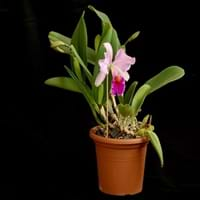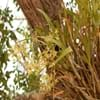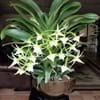Life Span
Annual and Biennials
Perennial
Origin
Africa, Middle Africa
South America, Brazil
Types
Not available
Cattleya orchid, Cattleya bicolor
Habitat
Subtropical climates, subtropical regions, tropical grasslands, Tropical regions
Tropical rainforest
USDA Hardiness Zone
9-14
11-15
Sunset Zone
H1, H2, 20, 21, 22, 23, 24
H1, H2
Habit
Clump-Forming
Clump-Forming
Flower Color
Yellow, Light Yellow, Lemon yellow, Gold, Bronze, Brown, Sienna
Pink, Magenta, Lavender, Blue Violet
Flower Color Modifier
Bicolor
Bicolor
Fruit Color
Yellow Brown
Not Available
Leaf Color in Spring
Green
Green
Leaf Color in Summer
Green
Green
Leaf Color in Fall
Green
Green
Leaf Color in Winter
Green, Gray Green
Green
Leaf Shape
Narrow
Long Elliptic
Plant Season
Spring, Summer
Spring, Fall, Winter
Sunlight
Partial Sun, Partial shade
Partial Sun, Partial shade
Type of Soil
Not Available
Not Available
The pH of Soil
Not Available
Not Available
Soil Drainage
Well drained
Not Available
Bloom Time
Late Spring, Early Summer, Summer
Early Spring, Spring, Late Fall, Early Winter, Winter, Late Winter, Indeterminate
Tolerances
Not Available
Not Available
Where to Plant?
Container, Ground, Pot
Container, Ground, Pot
How to Plant?
Cuttings, Seedlings
Seedlings, Transplanting
Plant Maintenance
Medium
Medium
Watering Requirements
Average Water Needs, Do Not over Water
Needs watering once a week, Water when soil is dry
In Summer
Lots of watering
Lots of watering
In Spring
Moderate
Moderate
In Winter
Average Water
Average Water
Soil pH
Not Available
Not Available
Soil Type
Not Available
Not Available
Soil Drainage Capacity
Well drained
Not Available
Sun Exposure
Partial Sun, Partial shade
Partial Sun, Partial shade
Pruning
Remove damaged leaves, Remove dead branches, Remove dead leaves
Prune after flowering, Remove damaged leaves, Remove dead leaves
Fertilizers
All-Purpose Liquid Fertilizer
All-Purpose Liquid Fertilizer
Pests and Diseases
Armored scales, Mealy bugs, Spider mites
Red blotch
Plant Tolerance
Drought
Drought
Flower Petal Number
Single
Single
Foliage Texture
Coarse
Medium
Foliage Sheen
Matte
Not Available
Attracts
Not Available
Not Available
Allergy
contact allergic dermatitis
Runny nose
Aesthetic Uses
Not Used For Aesthetic Purpose
Beautification, Bouquets, Landscape Designing, Showy Purposes, Used for decorating walls, fences, gates, hedges, etc.
Beauty Benefits
Not Available
Not Available
Environmental Uses
Air purification
Air purification
Medicinal Uses
Aphrodisiac, Diarrhea
Not Available
Part of Plant Used
Bulbs, Flowers, Leaves, Stem
Flowers, Leaves, Seeds
Other Uses
Unknown
Air freshner, Decoration Purposes, Economic Purpose, Oil is used in perfume, soaps, creams, etc., Showy Purposes, Used as Ornamental plant
Used As Indoor Plant
No
Yes
Used As Outdoor Plant
Yes
Yes
Garden Design
Container, Cutflower, Houseplant, Mixed Border, Tropical
Container, Cutflower, Feature Plant, Hanging Basket, Houseplant, Tropical
Botanical Name
ANSELLIA africana
CATTLEYA amethystoglossa
Common Name
African Ansellia, Leopard Orchid
Cattleya, Corsage Orchid
In Hindi
Ansellia
Not Available
In German
Ansellia
Cattleya
In French
léopard orchidée
Cattleya
In Spanish
orchidée léopard
Cattleya
In Greek
Ansellia
Cattleya
In Portuguese
Ansellia
Cattleya
In Polish
Ansellia
Cattleya
In Latin
Ansellia
Oncidium
Phylum
Tracheophyta
Magnoliophyta
Class
Liliopsida
Liliopsida
Order
Asparagales
Asparagales
Family
Orchidaceae
Orchidaceae
Genus
Ansellia
Chrysobalanus
Clade
Angiosperms, Monocots
Angiosperms, Monocots
Tribe
Cymbidieae
Epidendreae
Subfamily
Epidendroideae
Epidendroideae
Season and Care of Leopard Orchid and Cattleya
Season and care of Leopard Orchid and Cattleya is important to know. While considering everything about Leopard Orchid and Cattleya Care, growing season is an essential factor. Leopard Orchid season is Spring and Summer and Cattleya season is Spring and Summer. The type of soil for Leopard Orchid is Not Available and for Cattleya is Not Available while the PH of soil for Leopard Orchid is Not Available and for Cattleya is Not Available.
Leopard Orchid and Cattleya Physical Information
Leopard Orchid and Cattleya physical information is very important for comparison. Leopard Orchid height is 60.00 cm and width 90.00 cm whereas Cattleya height is 61.20 cm and width 50.80 cm. The color specification of Leopard Orchid and Cattleya are as follows:
Leopard Orchid flower color: Yellow, Light Yellow, Lemon yellow, Gold, Bronze, Brown and Sienna
Leopard Orchid leaf color: Green
Cattleya flower color: Pink, Magenta, Lavender and Blue Violet
- Cattleya leaf color: Green
Care of Leopard Orchid and Cattleya
Care of Leopard Orchid and Cattleya include pruning, fertilizers, watering etc. Leopard Orchid pruning is done Remove damaged leaves, Remove dead branches and Remove dead leaves and Cattleya pruning is done Prune after flowering, Remove damaged leaves and Remove dead leaves. In summer Leopard Orchid needs Lots of watering and in winter, it needs Average Water. Whereas, in summer Cattleya needs Lots of watering and in winter, it needs Average Water.





